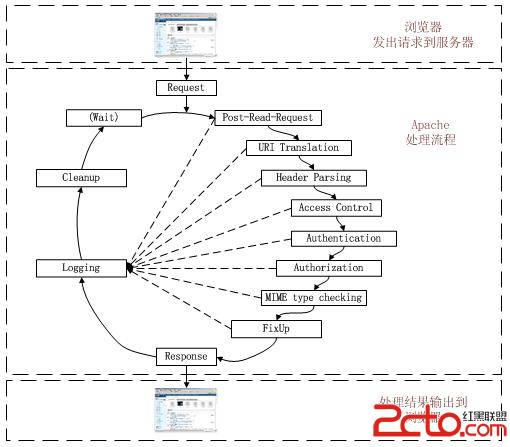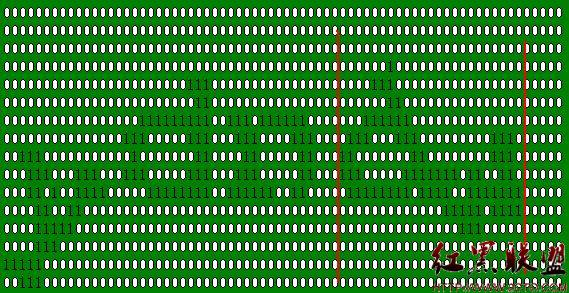当前位置:编程学习 > php >>
答案: 1、 PHP片段四种表示形式。
标准tags:<?php ?>
short tags:<? ?> 需要在php.ini中设置short _open_tag=on,默认是on
asp tags: <% %>需要在php.ini中设置asp_tags=on,默认是off
script tags:<script language=”php”></script>
2、 PHP变量及数据类型
1) $variable ,变量以字母、_开始,不能有空格
2) 赋值$variable=value;
3) 弱类型,直接赋值,不需要显示声明数据类型
4) 基本数据类型:Integer,Double,String,Boolean,Object(对象或类),Array(数组)
5) 特殊数据类型:Resourse(对第三方资源(如数据库)的引用),Null(空,未初始化的变量)
3、 操作符
1) 赋值操作符:=
2) 算术操作符:+,-,*,/,%(取模)
3) 连接操作符:. ,无论操作数是什么,都当成String,结果返回String
4) Combined Assignment Operators合计赋值操作符:+=,*=,/=,-=,%=,.=
5) Automatically Incrementing and Decrementing自动增减操作符:
(1)$variable+=1 <=>$variable++;$variable-=1 <=>$variable-,跟c语言一样,先做其他操作,后++或-
(2)++$variable,-$variable,先++或-,再做其他操作
6) 比较操作符:= =(左边等于右边),!=(左边不等于右边),= = =(左边等于右边,且数据类型相同),>=,>,<,<=
7) 逻辑操作符:|| ó or,&&óand,xor(当左右两边有且只有一个是true,返回true),!
4、 注释:
单行注释:// ,#
多行注释:/* */
5、 每个语句以;号结尾,与java相同
6、 定义常量:define(“CONSTANS_NAME”,value)
7、 打印语句:print,与c语言相同
8、 流程控制语句
1) if语句:
(1)if(expression)
{
//code to excute if expression evaluates to true
}
(2)if(expression)
{
}
else
{
}
(3)if(expression1)
{
}
elseif(expression2)
{
}
else
{
}
2) swich语句
switch ( expression )
{
case result
// execute this if expression results in result1
break;
case result
// execute this if expression results in result2
break;
default:
// execute this if no break statement
// has been encountered hitherto
}
3) ?操作符:
( expression )?returned_if_expression_is_true:returned_if_expression_is_false;
4) while语句:
(1) while ( expression )
{
// do something
}
(2)do
{
// code to be executed
} while ( expression );
5) for语句:
for ( initialization expression; test expression; modification expression ) {
// code to be executed
}
6) break;continue
9、 编写函数
1) 定义函数:
function function_name($argument1,$argument2,……) //形参
{
//function code here;
}
2) 函数调用
function_name($argument1,$argument2,……); //形参
3) 动态函数调用(Dynamic Function Calls):
<html>
<head>
<title>Listing 6.5</title>
</head>
<body>
<?php
function sayHello() { //定义函数sayHello
print "hello<br>";
}
$function_holder = "sayHello"; //将函数名赋值给变量$function_holder
$function_holder(); //变量$function_holder成为函数sayHello的引用,调用$function_holder()相当于调用sayHello
?>
</body>
</html>
4) 变量作用域:
全局变量:
<html>
<head>
<title>Listing 6.8</title>
</head>
<body>
<?php
$life=42;
function meaningOfLife() {
global $life;
/*在此处重新声明$life为全局变量,在函数内部访问全局变量必须这样,如果在函数内改变变量的值,将在所有代码片段改变*/
print "The meaning of life is $life<br>";
}
meaningOfLife();
?>
</body>
</html>
5) 使用static
<html>
<head>
<title>Listing 6.10</title>
</head>
<body>
<?php
function numberedHeading( $txt ) {
static $num_of_calls = 0;
$num_of_calls++;
print "<h1>$num_of_calls. $txt</h1>";
}
numberedHeading("Widgets"); //第一次调用时,打印$num_of_calls值为1
print("We build a fine range of widgets<p>");
numberedHeading("Doodads"); /*第一次调用时,打印$num_of_calls值为2,因为变量是static型的,static型是常驻内存的*/
print("Finest in the world<p>");
?>
</body>
</html>
6) 传值(value)和传址(reference):
传值:function function_name($argument)
<html>
<head>
<title>Listing 6.13</title>
</head>
<body>
<?php
function addFive( $num ) {
$num += 5;
}
$orignum = 10;
addFive( &$orignum );
print( $orignum );
?>
</body>
</html>
结果:10
传址:funciton function_name(&$argument)
<html>
<head>
<title>Listing 6.14</title>
</head>
<body>
<?php
function addFive( &$num ) {
$num += 5; /*传递过来的是变量$num的引用,因此改变形参$num的值就是真正改变变量$orignum物理内存中保存的值*/
}
$orignum = 10;
addFive( $orignum );
print( $orignum );
?>
</body>
</html>
结果:15
7) 创建匿名函数:create_function(‘string1','string2'); create_function是PHP内建函数,专门用于创建匿名函数,接受两个string型参数,第一个是参数列表,第二个是函数的主体
<html>
<head>
<title>Listing 6.15</title>
</head>
<body>
<?php
$my_anon = create_function( '$a, $b', 'return $a+$b;' );
print $my_anon( 3, 9 );
// prints 12
?>
</body>
</html>
8) 判断函数是否存在:function_exists(function_name),参数为函数名
10、 用PHP连接MySQL
1) 连接:&conn=mysql_connect("localhost", "joeuser", "somepass");
2) 关闭连接:mysql_close($conn);
3) 数据库与连接建立联系:mysql_select_db(database name, connection index);
4) 将SQL语句给MySQL执行:$result = mysql_query($sql, $conn); //增删改查都是这句
5) 检索数据:返回记录数:$number_of_rows = mysql_num_rows($result);
将记录放入数组:$newArray = mysql_fetch_array($result);
例子:
<?php
// open the connection
$conn = mysql_connect("localhost", "joeuser", "somepass");
// pick the database to use
mysql_select_db("testDB",$conn);
// create the SQL statement
$sql = "SELECT * FROM testTable";
// execute the SQL statement
$result = mysql_query($sql, $conn) or die(mysql_error());
//go through each row in the result set and display data
while ($newArray = mysql_fetch_array($result)) {
// give a name to the fields
$id = $newArray['id'];
$testField = $newArray['testField'];
//echo the results onscreen
echo "The ID is $id and the text is $testField <br>";
}
?>
11、 接受表单元素:$_POST[表单元素名],
如<input type=text name=user>ó$_POST[user]
接受url中queryString中值(GET方式):$_GET[queryString]
12、转向其他页面:header("Location: http://www.samspublishing.com");
13、字符串操作:
1)explode(“-”,str)óJava中的splite
2)str_replace($str1,$str2,$str3) =>$str1要查找的字符串,$str2用来替换的字符串,$str3从这个字符串开始查找替换
3)substr_replace:
14、session:
1)打开session:session_start(); //也可以在php.ini设置session_auto_start=1,不必再每个script都写这句,但是默认为0,则必须要写。
2)给session赋值:$_SESSION[session_variable_name]=$variable;
3)访问session:$variable =$_SESSION[session_variable_name];
4)销毁session:session_destroy();
15、显示分类的完整例子:
<?php
//connect to database
$conn = mysql_connect("localhost", "joeuser", "somepass")
or die(mysql_error());
mysql_select_db("testDB",$conn) or die(mysql
上一个:简单介绍下 PHP5 中引入的 MYSQLI的用途
下一个:PHP_MySQL教程-第二天while循环与数据库操作第1/2页
- 更多php疑问解答:
- wordpress问题<?php if(have_posts()) : ?>
- 建设一个搜索类网站php还是jsp,数据库那个好
- 我是一个学PHP的,我现在已经学会了PHP,HTML,CSS,JS,JQ,AJAX,XML,thinkPHP,smarty模板
- 没理由啊 php代码无法执行,貌似有语法错误。。。
- 关于PHP 和API 的一段代码不懂啊不懂,请高手指点! 这是淘宝API的
- php语言中,序列化到底在那里使用?它的优势是什么?劣势是什么?
- PHP函数等于或等于应该怎么表达
- 请教php高手,解决basename函数和mb_substr函数处理中文文件名称的解决方法,在上传文件时,总是出现乱码
- .NET,PHP,JAVA,JS优秀点分别是?
- 织梦cms 在环境监测的时候 wamp5 gd不支持 是为什么。;extension=php_gd2.dll这一句我删除了还是不显示?
- 我想学PHP。1.应安装什么编程工具? 2. 装LIUNX系统是装简易的还是?什么版本的?3.还应安装什么?
- <?php 和 <? 有什么区别
- PHP网页如何接收按钮的值?请问
- 买来书的代码运行好是错误。。帮帮忙啊。php
- 求,一个php代码,用来修改 mysql数据库中的商品名字的大小写





